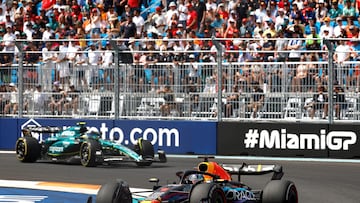FORMULA 1
How much money can F1 bring to the race city organizer?
Hosting a Formula 1 race has varying financial effects on local economies depending on the venue, facilities, interest in the sport, and contract details.

The economic benefits of hosting a Formula 1 race are influenced by various factors such as the location, popularity of the sport, infrastructure, and specific terms of the hosting agreement. Cities that host Formula 1 races can reap numerous advantages, such as:
- Tourism: International visitors, including fans, teams, sponsors, and media personnel, flock to Formula 1 races. They spend money on accommodation, food, transportation, souvenirs, and other local goods and services, which helps to boost the local economy.
- Hotel and Restaurant Industry: The race weekend brings an influx of visitors, leading to increased bookings for hotels and restaurants in the area, providing a much-needed boost to these industries.
- Transportation: The event can increase demand for transportation services such as taxis, rental cars, and public transportation, further benefiting local businesses.
- Sponsorship and Advertisement: Major sponsors and advertisers invest in promotional activities before and during Formula 1 races. These activities can benefit local businesses and media companies.
- Job Creation: Temporary jobs are created for event staff, security personnel, hospitality workers, and more.
- Local Business Sales: Retail stores and souvenir shops can see increased sales due to the higher number of visitors.
- Infrastructure Development: Hosting a Formula 1 race might require the development or improvement of infrastructure, such as roads, transportation networks, and event venues. These developments can have long-term benefits for the city.
Measuring the precise economic impact accurately can be challenging, and studies on the topic may generate varying results. Additionally, when assessing the net financial gain for the city, it is essential to consider the costs associated with hosting a Formula 1 race, such as the hosting fee paid to F1, infrastructure investments, and other expenses.
The case of Miami GP
According to an independent economic commission’s report, the recent Formula 1 race weekend in Miami generated $449 million for the local economy.
This marks a 29 percent increase from the previous year ($350 million). When combined with the economic impact of the two previous Miami Formula 1 races, the estimated total revenue comes to $798 million. The Miami Grand Prix of this season experienced a decrease of 24% in viewership as compared to its debut event in 2022. However, it still had the second-largest live Formula One audience in the United States.
Organizers of the 2024 Miami Formula 1 race plan to expand the stands’ capacity to accommodate up to 300,000 spectators for weekend sessions.
The city of Miami has recently joined the Formula 1 calendar by introducing the “Miami International Autodrome,” a hybrid circuit designed around the “Hard Rock Stadium” in Miami Gardens.
In 2022, the event attracted 240,000 spectators (80,000 per day), while this year’s race saw an increase, with 270,000 visitors reported (90,000 per day). Organizers plan to accommodate up to 100,000 people daily from Friday to Sunday in the next event.
Tickets for the 2024 race weekend in Miami are now available, and the race is scheduled to take place from May 3-5, marking the sixth race of the season.






